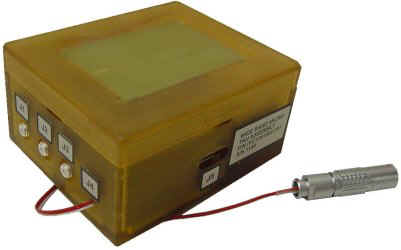Historical

The Wide-Band Micro-Miniature Tri-Axial Accelerometer Unit (WB MicroTAU) system is a wireless, high-speed data acquisition network for dynamic acceleration sensing and recording applications. The system includes WB MicroTAU Remote Units, a WB MicroTAU Receiver Unit, and the Graphical User Interface (GUI).
The WB MicroTAU Remote Unit is a small, battery-powered, autonomous, wireless device designed for trigger initiated acquisition and recording of high-speed acceleration data. The units instrument three external accelerometers, and each unit can be programmed for a triggered acquisition event. Download and event setup commands are issued either wirelessly or through a standard USB connection from a Graphical User Interface running on a PC.
The WB MicroTAU system was designed for NASA to monitor the dynamic behavior between the SSME (Space Shuttle Main Engine) feedlines and the SSME low-pressure turbo-pump that produced the cracks that temporarily grounded the Shuttle fleet in the summer of 2002. The WB MicroTAU is intended to take tri-axial accelerometer data on and around the SSME LH2 and LO2 feedlines and their supporting brackets. STS-114 is scheduled to be the first flight of WB MicroTAU hardware (launch TBD).
- Sample Rate: 20kHz
- 3 External accelerometers per unit
- 1 External RTD per unit
- Approximate Size: 6.9cm x 5.3cm x 3.3cm
View the full Wide-Band MicroTAU Technology Profile (WB_MicroTAU.pdf)
In 2003, NASA utilized the WB MicroTAU system to monitor a series of foam impact tests simulating the launch impact event on the Space Shuttle Columbia in early 2003.
Click here for more information about this WB MicroTAU application.
Click here for more information on the original MicroTAU™ system.
